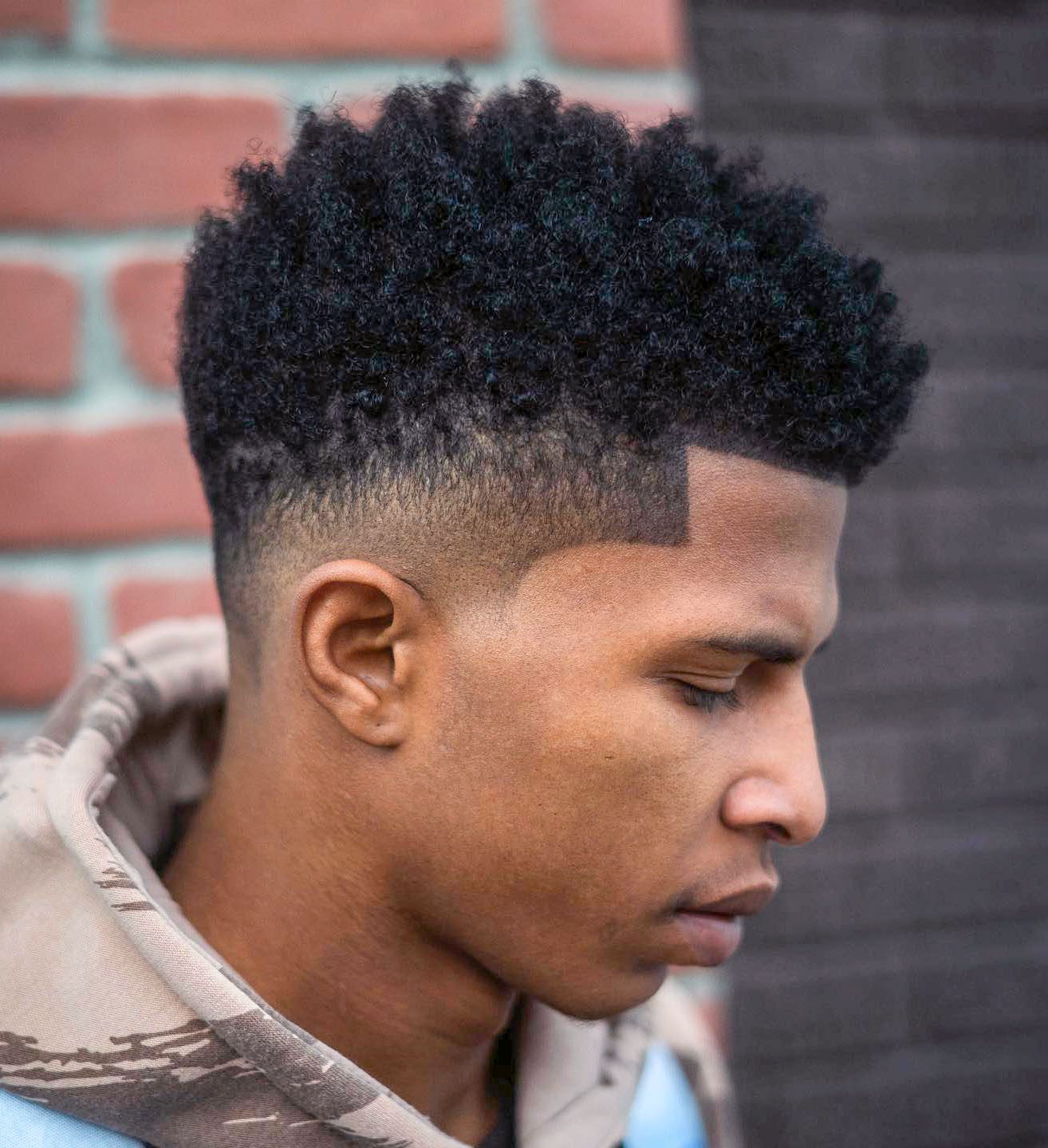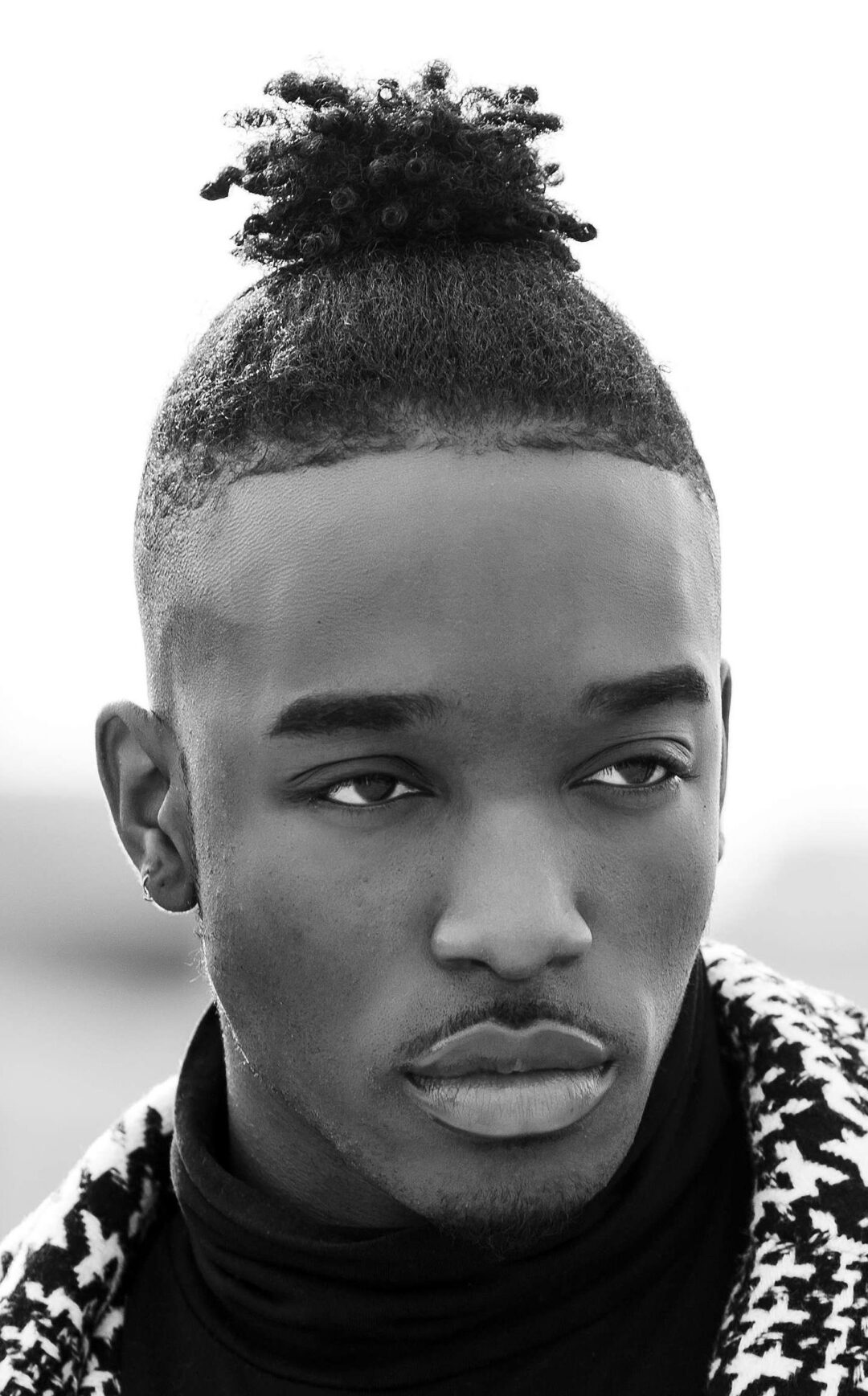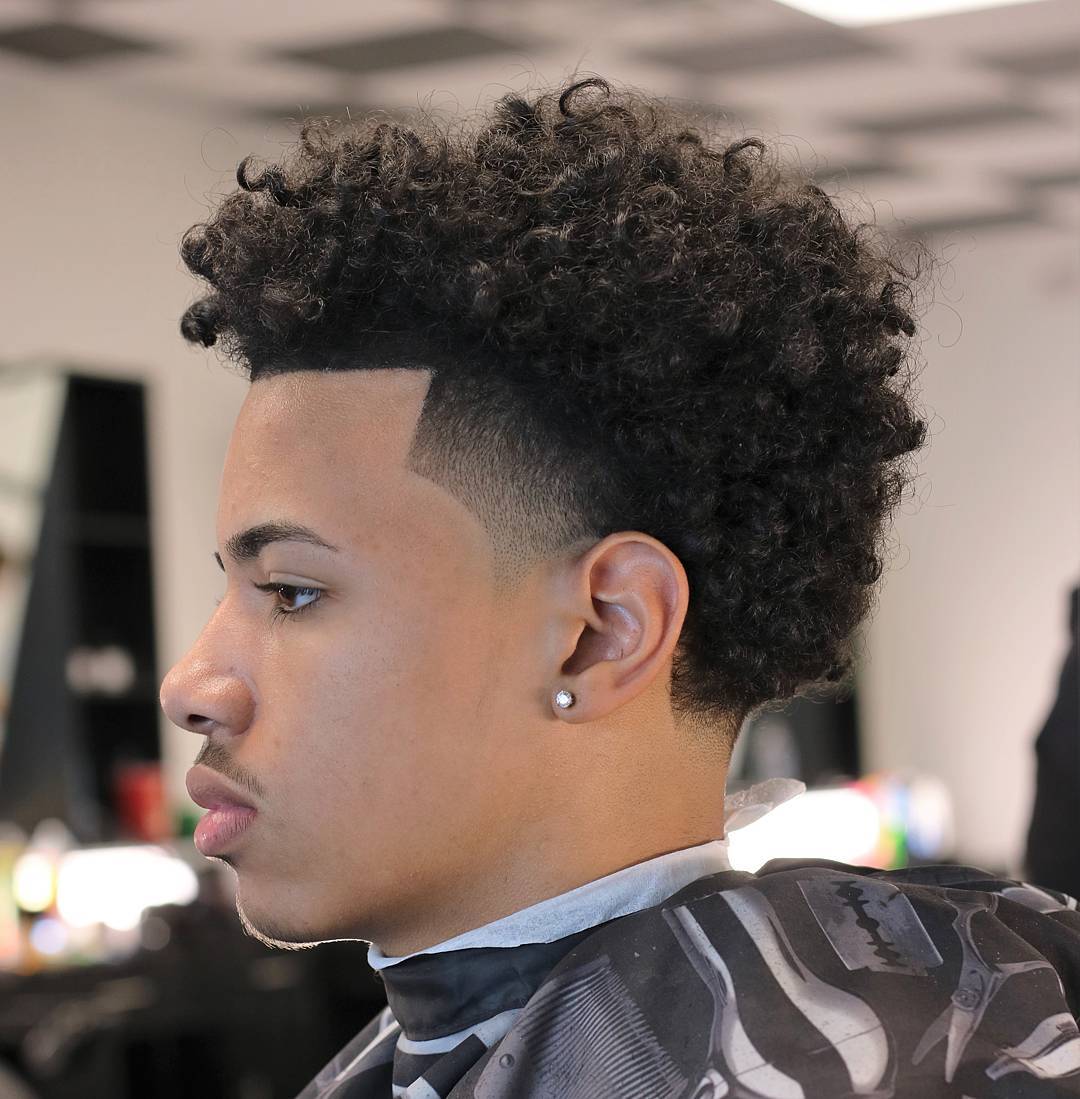
The afro, a majestic crown of natural curls, stands as a powerful symbol of identity, heritage, and undeniable style. For men blessed with this unique hair type, the possibilities for expression are vast and exciting. Far from being a monolithic style, the afro offers incredible versatility, allowing for everything from bold statements to understated elegance. This comprehensive guide delves into the rich world of hairstyles for men with afros, exploring classic looks, modern trends, and essential care practices to help you unlock the full potential of your natural hair.
Understanding the Afro: A Foundation for Style
Before diving into specific hairstyles, it’s crucial to understand the characteristics of afro-textured hair. Typically, it features tightly coiled, kinky strands that grow upwards and outwards, creating volume and a distinctive spherical or cloud-like shape. This texture, while incredibly strong and resilient, is also prone to dryness due to its unique structure, which makes it harder for natural oils from the scalp to travel down the hair shaft. It also experiences significant shrinkage, meaning wet hair appears much shorter than its actual length. Embracing these characteristics, rather than fighting them, is the first step towards healthy, stylish afro hair.
Classic and Iconic Afro Styles
Some afro styles have transcended trends, becoming timeless emblems of cool and confidence.
1. The Full, Rounded Afro: This is perhaps the most iconic representation of the afro, characterized by its perfectly symmetrical, cloud-like shape. Popularized in the 1960s and 70s as a symbol of Black power and pride, the full afro remains a powerful statement today. It requires significant length and consistent shaping with an afro pick or wide-tooth comb to maintain its volume and spherical form. Regular moisturizing and gentle handling are crucial to prevent breakage and frizz, ensuring a soft, well-defined silhouette. This style speaks volumes about embracing one’s natural texture and heritage.
2. The Tapered Afro: Offering a more refined and contemporary take on the classic, the tapered afro features shorter hair on the sides and back, gradually fading or tapering up to a fuller, longer top. This creates a neat, clean-cut appearance while still celebrating the volume and texture of the afro. The taper can be subtle or dramatic, allowing for personalization. It’s an excellent choice for men who want the presence of an afro but with a more managed and professional edge. Maintenance involves regular trims to keep the taper sharp and the top well-shaped.
3. The Afro Puff/Bun: For men with longer afros, the afro puff or bun offers a quick, stylish, and protective option. The hair is gathered and secured at the crown or back of the head, creating a prominent puff or bun. This style helps to keep hair off the neck and face, making it practical for active lifestyles or warmer weather. It also minimizes manipulation, contributing to hair health. A soft hair tie or elastic is essential to avoid tension and breakage.
Braided and Twisted Styles: Protection and Definition
Braids and twists are not only incredibly stylish but also serve as excellent protective styles, minimizing daily manipulation and helping to retain moisture and length.
4. Cornrows: A timeless and culturally rich style, cornrows involve braiding the hair very close to the scalp in continuous, raised rows. They can be styled in simple straight-back patterns, intricate geometric designs, or combined with a fade for a modern look. Cornrows are low-maintenance once installed, lasting for several weeks with proper care. They protect the hair from environmental damage and reduce breakage, promoting growth. The versatility of designs makes cornrows a popular choice for personal expression.
5. Box Braids: Unlike cornrows, box braids are individual braids that are not attached to the scalp. Sections of hair are divided into square or rectangular parts (hence "box") and then braided from the root to the ends. Box braids offer immense versatility in terms of size, length, and color. They can be worn up in a bun, down, or styled in various ways. Like cornrows, they are a protective style that can last for weeks, requiring minimal daily styling. Moisturizing the scalp and braids is key to maintaining their freshness and preventing dryness.
6. Two-Strand Twists: This popular style involves dividing a section of hair into two strands and twisting them around each other from root to tip. Two-strand twists provide excellent definition, showcase the natural curl pattern, and lock in moisture. They can be worn as a standalone style for days or weeks, or they can be unraveled once dry to create a "twist-out," which results in beautifully defined, voluminous waves or curls. Twists are relatively easy to install and maintain, making them a go-to for many men with afros.
7. Flat Twists: Similar to cornrows in their application, flat twists are twisted directly onto the scalp, creating a raised, rope-like pattern. They offer a softer, less defined look than cornrows but provide similar protective benefits. Flat twists can be styled in various patterns and are often used as a base for up-dos or to transition into other styles. They are also a great option for achieving a defined twist-out when unraveled.
8. Dreadlocks (Locs): A profound and deeply personal journey, dreadlocks are formed when strands of hair are matted and coiled together to form rope-like sections. Locs can be cultivated through various methods (e.g., coils, two-strand twists, braids, freeform) and evolve over time, becoming stronger and more defined with age. They require commitment but offer unparalleled freedom and a unique aesthetic. Locs can be short, long, styled in updos, ponytails, or left to hang freely. Maintenance involves regular "retwisting" or "retightening" to keep the roots neat and the locs well-formed, along with consistent moisturizing. Locs are not just a hairstyle; for many, they are a spiritual and cultural statement.
Modern and Creative Afro Styles
Beyond the classics and protective styles, contemporary trends offer exciting ways to customize the afro.
9. Afro with Fade/Undercut: This highly popular modern style combines the natural volume of the afro on top with sharply faded or undercut sides and back. The contrast between the soft, coily texture of the afro and the crisp, clean lines of the fade creates a striking and fashionable look. The fade can be low, mid, or high, allowing for significant customization. This style offers a clean aesthetic while still celebrating the natural hair texture.
10. Sponge Twists/Coils: For shorter afros, a hair sponge (a sponge with holes or patterns) can be used to quickly create defined coils or twists. By gently rubbing the sponge over the hair in circular motions, the hair clumps together into neat, uniform coils. This is an excellent method for achieving a textured, defined look without extensive braiding or twisting, perfect for a quick style refresh.
11. Afro with Designs/Parting: Adding shaved lines, intricate designs, or sharp, defined parts to an afro or tapered afro can elevate the style and add a personalized touch. These artistic elements are typically created by a skilled barber using clippers and edgers, allowing for unique patterns that reflect individual style.
12. The Frohawk/Afro Mohawk: An edgy and bold statement, the frohawk maintains the volume of the afro along the center of the head, while the sides are either faded down or kept significantly shorter. This creates a dramatic, upward-sweeping silhouette that commands attention. It’s a powerful choice for those looking to express confidence and individuality.
Essential Afro Hair Care and Maintenance
Regardless of the style you choose, proper care is paramount for healthy, thriving afro hair.
- Moisture is Key: Afro hair thrives on moisture. Incorporate leave-in conditioners, natural oils (like shea butter, coconut oil, jojoba oil, or argan oil), and water-based moisturizers into your daily routine. Apply products when hair is damp to lock in hydration.
- Gentle Cleansing: Use sulfate-free shampoos and conditioners to avoid stripping natural oils. Co-washing (washing with conditioner only) can also be beneficial between shampoo days.
- Deep Conditioning: Weekly or bi-weekly deep conditioning treatments are crucial to replenish moisture and strengthen the hair strands.
- Detangling with Care: Always detangle afro hair when it’s damp and coated with conditioner, using your fingers or a wide-tooth comb. Start from the ends and work your way up to minimize breakage.
- Protect at Night: Sleep on a satin pillowcase or wear a satin bonnet to reduce friction, prevent tangles, and retain moisture. Cotton absorbs moisture and can cause frizz.
- Regular Trims: Even if you’re growing your hair out, regular trims (every 2-3 months) are essential to remove split ends and maintain the shape and health of your afro.
- Patience and Consistency: Healthy hair growth and maintenance are a journey. Be patient with your hair, understand its needs, and be consistent with your care routine. Avoid excessive heat and harsh chemicals.
Choosing the Right Style for You
When selecting a hairstyle, consider your lifestyle, face shape, hair length, and personal preference. A skilled barber or natural hair stylist can offer invaluable advice, helping you choose a style that complements your features and fits your daily routine. Don’t be afraid to experiment; the beauty of afro hair lies in its incredible adaptability.
Conclusion
Hairstyles for men with afros are a testament to the versatility, strength, and beauty of natural hair. From the iconic full afro to intricate braids, defined twists, and bold fades, each style offers a unique way to express individuality and cultural pride. By embracing the natural texture of your hair and committing to a consistent care routine, you can unlock a world of stylish possibilities, transforming your afro into a magnificent crown that truly reflects who you are. Embrace your coils, celebrate your heritage, and wear your afro with confidence and flair.






